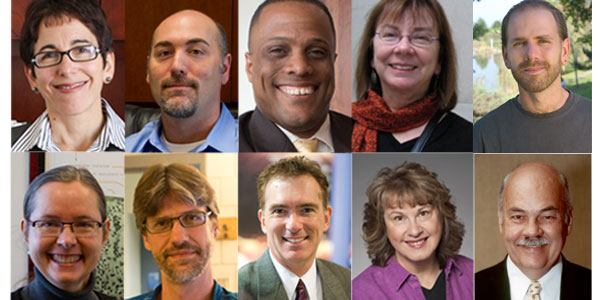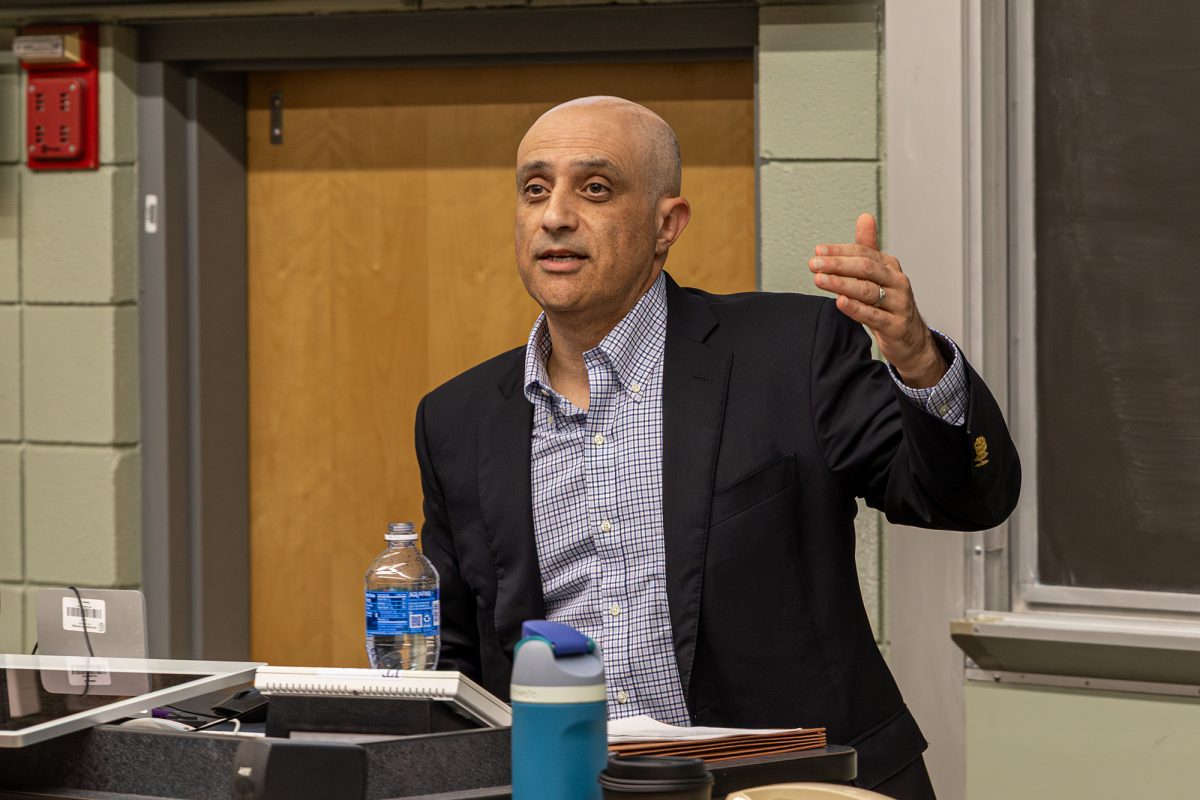The deadline to register for The Chronicle of Higher Education’s Great Colleges program is Feb. 17, but Ithaca College decided against entering again this year. Instead of using the broad benchmark to measure itself against other institutions, the college has been focusing internally to bring about employee satisfaction.
Each spring since 2008, the Great Colleges to Work For survey has asked randomly selected faculty of participating institutions to answer questions relating to their work environment, supervisor leadership, policies and benefits. Administered by the organization development firm ModernThink in partnership with The Chronicle, the survey groups schools according to type and enrollment size and recognizes those schools that receive positive responses in multiple survey categories.
The college participated in the 2010 survey along with 274 other institutions across the country. When the results came in July of that year, the college was not named as one of the 97 colleges recognized as a great place to work.
President Tom Rochon announced these results at the All College Meeting Jan. 20, 2011, followed by an indication that the college would not participate in The Chronicle survey again in the future because of the results.
Mark Coldren, associate vice president for human resources at the college, is a member of the College and University Professional Association for Human Resources. CUPA-HR, consisting of 17,000 human resource professionals and 1,900 member organizations including the college, provides research for and assists ModernThink in designing the Great Colleges survey. Participants are asked to rate 60 statements on an agreement scale across categories including collaborative governance, diversity, job satisfaction and compensation.
The survey instrument originally excluded hourly-paid workers, which was the main reason Rochon gave for the college not participating again.
“Due to some aspects of the survey methodology, and most particularly because the survey excludes staff who are paid on an hourly rather than salaried basis, we did not find the survey as useful as we had hoped to serve as a continuing benchmark of staff satisfaction and morale,” Rochon said in an email.
After the survey was first administered in 2008, Coldren said, CUPA-HR went to The Chronicle with this concern, but The Chronicle responded saying that its readership includes mainly salaried faculty at institutions. In 2010, the college paid more to include hourly workers in the survey without knowing they would be exempt from results.
“We did it once, we got some results, we realized because they didn’t include [hourly paid workers] that it wasn’t as comprehensive of a survey as we wanted,” Coldren said.
As of last spring, however, The Chronicle began including hourly paid staff in the survey. When this information was presented to Rochon, he said future participation may not be out of the picture.
“I am glad the Great Colleges survey sponsors saw the light,” he said. “This would put the possibility of renewed participation up for discussion in a future year, but not on the short timeline available for the current year.”
Since the 2010 survey, the college has taken steps to address feedback about training of supervisors by enforcing a supervisor academy, Coldren said. Anybody who oversees a department is expected to attend training that is offered twice a year, he said.
In response to the survey, the college has looked internally to conduct its own campus survey, which is an integral part of the Ithaca College Diversity Strategic Plan and IC 20/20, Coldren said.
Coldren said the college circulated the Campus Acceptance, Inclusion and Fairness Survey to students, faculty and staff in the fall of 2012, but the raw data have not been tabulated into readable reports yet. While this is still on the radar, he said, another Chronicle survey could also be beneficial later on because it now includes hourly workers.
“Once we get through this campus-climate survey and decide what we’re going to do with that, then yeah, it could be a good path for us again,” Coldren said. “I think it would include everybody; it does have comparatives across the industry.”
George Mason University is one institution that surveys both internally and externally. Janet Walker, work life and communications coordinator in human resources at George Mason, said the university has been listed in The Chronicle’s list since its creation in 2008.
“We survey internally about how people feel about working at the university, but this was a way of being able to benchmark yourself to other people,” she said.
The approach used by the Rochester Institute of Technology is more similar to that of the college. Bob Finnerty, chief communications officer at RIT, said once his institution began conducting internal surveys it ceased to participate. While registration is free, there is an expense attached to detailed reports of the results.
“RIT began using The Chronicle’s survey in 2008 because, at the time, we were not conducting internal surveys, and we felt this would be a good way to engage our faculty and staff,” Finnerty said. “Last year, we were doing internal surveys of faculty and staff, so we opted not to participate. Each year we re-evaluate whether we will do the survey.”
The results of the Vision, climate survey and possible participation in The Chronicle survey are yet to be seen, Coldren said.
“I think every organization every year tries to say how can it be a better employer,” he said.









